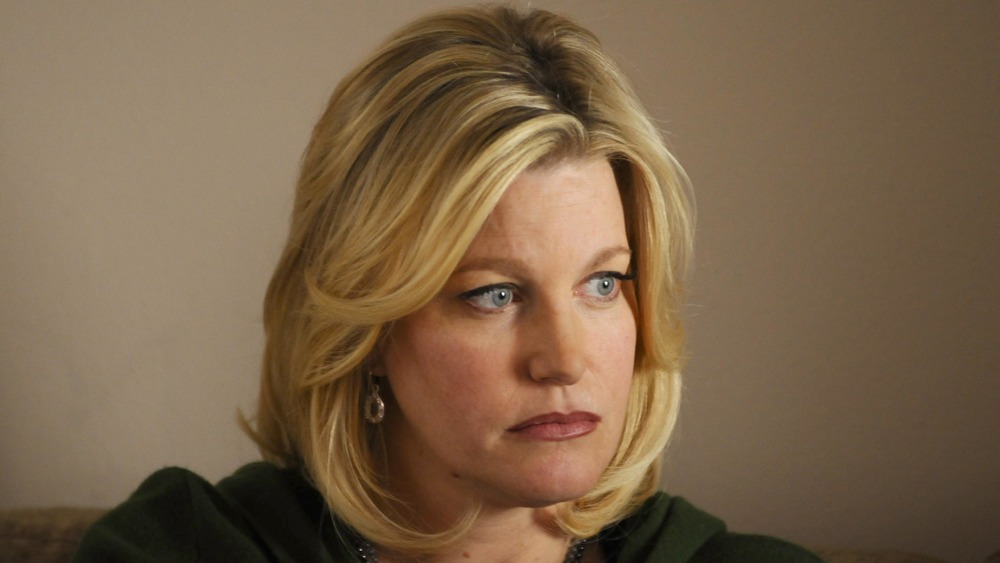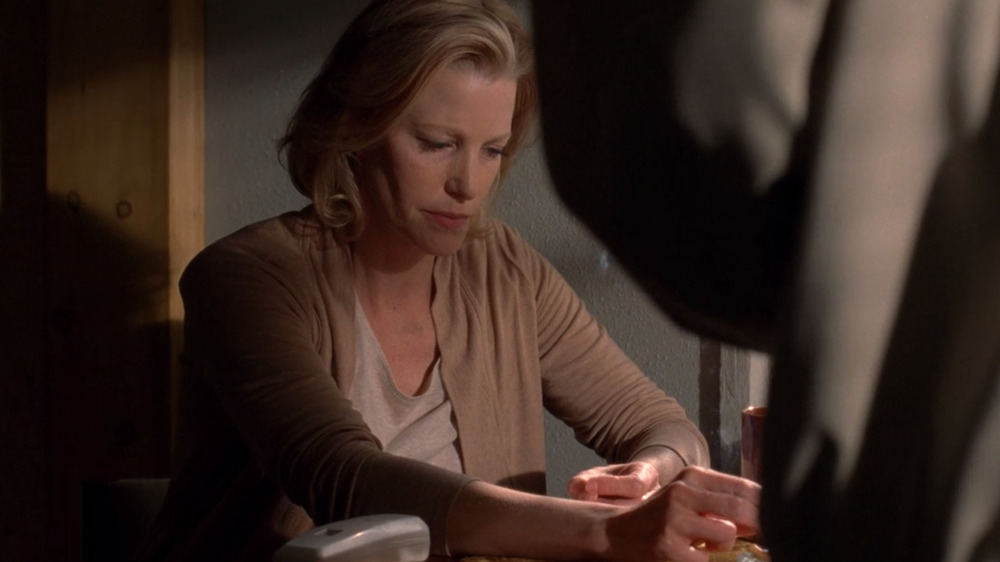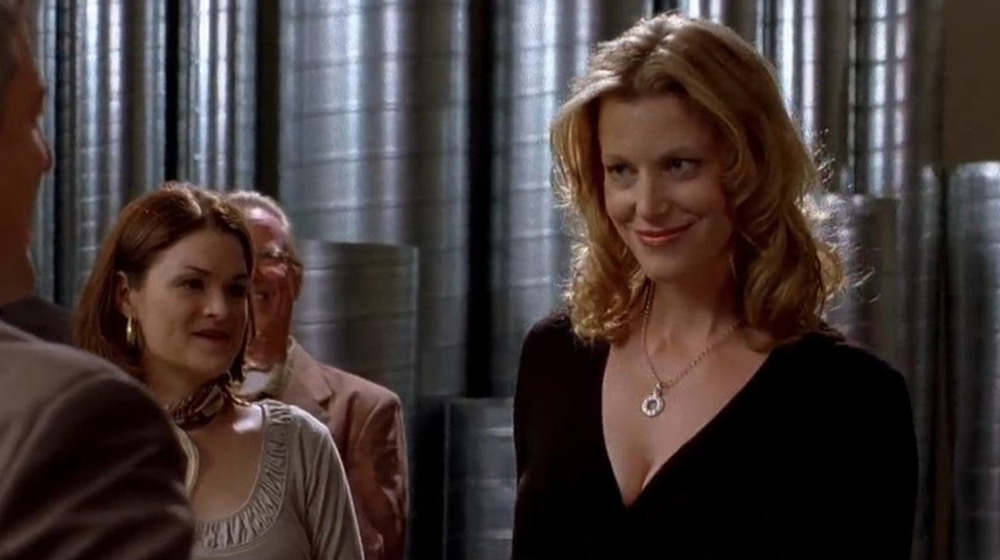What Breaking Bad Fans Notice About Skyler Only During Rewatches
Breaking Bad is arguably one of the greatest TV shows ever made, and was hugely popular during its five-year run. However, popularity is often a double edged sword. With the positive attention paid to certain aspects of the show came over-the-top ridicule for others. One character that often bore the brunt of fan ire was Walter White's (Bryan Cranston) wife, Skyler (Anna Gunn).
The often over-the-top hatred of Skyler was an unfortunate constant during Breaking Bad's time on the air. The vitriol got so bad that Gunn herself wrote a New York Times op-ed in which she described seeing death threats online targeted toward her from viewers of the show who didn't like the character she played. She attributed the reactions to a mixture of things, including the fact that some fans viewed Walter as the hero of the series, making Skyler, who often challenged him, the villain, as well as straight up misogyny. But no matter the cause, Skyler was a favorite target of a very vocal group of haters.
However, as times have gone by and culture has evolved, there is a sea-change brewing in regards to the reception of Skyler White. In a recent Reddit thread, fans of the series who have been rewatching the show are sounding off to question if everyone got it wrong the first time and whether Skyler might actually be one of the best characters on the series.
Reddit fans are starting to see the show through Skyler's perspective
Reddit user EntertainmentBorn761 kicked off a conversation about Breaking Bad's most maligned character by starting a thread titled "Skyler White is a solid character." In it, they make the simple point that despite what they and others may have felt during the show's initial run, "She really wasn't that bad."
User GlennQuagglechek wrote in with a simple suggestion for those who professed to loathe the character: "Anyone who hates [Skyler] should rewatch the show a few times and see if they have the same opinion. The more you rewatch the more you have sympathy for her." Several other users were already one step ahead of them. As user NYHikes wrote, "I couldn't stand her on my first watch. And then when I re-watched for the first time [...] I thought 'This woman woke up one day to her husband telling her he's a meth drug king pin and is involved with the cartel, etc. etc.' and she TRIED TO HELP KEEP HIS MONEY CLEAN and didn't turn him in [...] Such an under appreciated character."
User LifeEnthusiast021 had a similar take. They admitted, "I'm guilty of hating her (I was 17-18 when I watched the series. So naive). Now 8 years later, I've watched the series again with a new mindset. Of course her feelings were valid [...]" Another user, Feefifofanna, brought up something Gunn talked about in her op-ed: "She is a great character and it's so sad that people hated for her because they were rooting for Walt even though Walt is an objectively s—– person."
The reappraisal of Skyler isn't something that's limited to the Breaking Bad subreddit. In fact, there has been a larger cultural conversation about the character going on since the show ended.
There's more to Skyler's character than many realized
No matter what a certain subset of fans thought during the run of the series, both the character of Skyler and Gunn's performance have been lauded by culture critics and award bodies alike. During Breaking Bad's original run, she won the Emmy for Best Supporting Actress in a Drama Series twice and was nominated for a slew of other awards. More recently, the character has received a re-evaluation that has cast her in a much more nuanced light. In a 2018 essay for The Guardian titled "Skyler White: the Breaking Bad underdog who set the template for TV's antiheroine," Ellen E Jones explores not just what was at the heart of the backlash that Skyler received, but also what aspects of the character got ignored in favor of blind ire. For Jones, Skyler's role in the show helped set a template for other antiheroine characters who came after her, such as Cersei from Game of Thrones and Claire Underwood from House of Cards.
Of Skyler's "likability" problem, she wrote, "In most mainstream US television 'likability' is, after physical attractiveness, the most important quality any female character can possess, but Skyler was created for a different purpose."
Jones goes on to say that Skyler "represents the dull domesticity that the antihero must reject in order to set the thrilling events of the narrative in motion" and that "she also acts as a lightning rod for negative emotions, thus allowing the audience to get thoroughly, guiltlessly swept up in Walt's story."
The complex role Skyler plays in the overall arc of Breaking Bad is something to keep in mind next time you embark on a re-watch.


